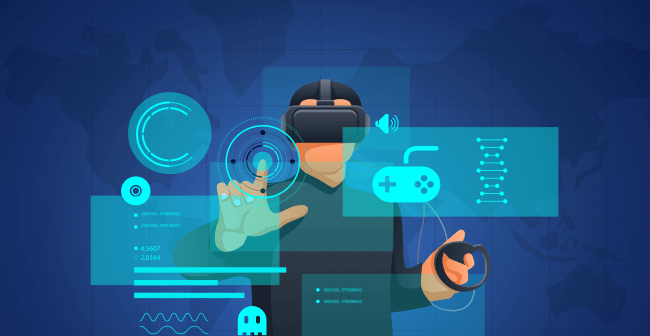I bet you might have heard about the term “digital transformation” before. Haven’t you? It is an ultimate buzzword that is trending for the last few years now in the digital marketing domain. However, now it is starting to kick into high gear. It is a term that is popularly used by those processes that employ digital technologies to come up with a solution to the ever-transforming market and business requirements.
Due to the swift development of technologies, it has become inevitable for companies to acquire and execute them to get the most out of their services. There are lots of available technologies and tools that add up to the process. To utilize these tools & technologies in a much better way companies are now moving towards digital transformation.
Even business owners have started to consider the digital transformation plan for the bright future of the venture. Here are some statistics to prove this point.
- Total investment between 2019 and 2023 in Digital Transformation technologies will increase between 15% and 20% across all sectors, according to the International Data Corporation (IDC).
- 60% of companies that have undergone a digital transformation have created new business models.
- 52% of marketers around the world say driving growth through digital transformation is their top strategic focus.
- 55% of companies without a digital transformation believe they have less than a year before they start to lose market share
These stats highlight one thing that small and large companies are preparing themselves to include a digital transformation plan for growing their business.
Let’s now divert our attention to the top digital transformation trends for the year 2022.
Top 10 Promising Digital Transformation Trends for 2022
We are halfway through the year 2022 and it’s got to be said that this year is all about going digital. Let’s look at some of the digital transformation trends that will prove to be decisive this year.
Table of Contents
1. AI and Machine Learning Powering
AI and machine learning powering are the hottest digital transformation trends in the last couple of years. And, once they start working together, they can give better results. According to a recent survey by Infosys, Human Amplification in the Enterprise, 98 percent of respondents who used AI-supported activities to power digital transformation said it had generated additional revenue for their organizations, with 56 percent saying it made more than $10 million.
In the same survey, it was found that machine learning had a great impact. In fact, 75% of respondents said it played a crucial role in their organization’s digital transformation.
Furthermore,
- 91% believed that AI-assisted organizations make processes more efficient
- 88% believed that AI-led automation efforts gave them free time to concentrate on more creative activities
- 85% believed that AI implementations were the biggest factor driving productivity increases in their organizations
- 84% believed that AI simplified their work
As time goes by, we will see their speed and accuracy getting better in the coming year.
2. Predictive Analytics
With the explosion of data all around, it has become very difficult for businesses to manage this huge chunk of information. The surprising part is, the rate of data creation is not slowing down either. Several organizations are finding it difficult to come to terms with this new phenomenon.
The problem is, they do not have the awareness of using this huge data properly and second, there is a skill gap hurdle. However, there are still companies like Microsoft, Amazon, Alibaba, Baidu and Tencent that are doing quite well. The reason being, they see the value of the data being processed. This is where the role of predictive analytics starts.
With the help of predictive analytics companies are transforming their businesses to new heights by predicting the next step of success for their business. Companies like Netflix and Amazon have started to predict what customers want to view next or buy later. With the convergence of technologies, we will see increasing use of predictive analytics by companies which will help in giving them an edge over their competitors as the years roll by.
3. Support Vector Machines
Support Vector machines are a cutting-edge, effectively supervised machine learning algorithm that assists in resolving regression problems and even classification of data. In simple words, with the help of support vector machines, it is possible to carry out some of the most complex data transformations. Then understand the best way to separate the data on the basis of the labels or outputs defined by you.
Here are some of the common applications of Support Vector Machines (SVM):
- Face Detection
- Text and hypertext categorization
- Image classification
- Recognition of handwriting
Apart from these practical implementations, enterprises can benefit from SVM and improve their decision-making processes. With the help of SVM, business owners can conduct competitor analysis and predict the next step of their competitors.
4. Natural Language Processing (NLP)
Natural Language Processing (NLP) is one of the most adopted digital transformations trends in 2022. NLP helps in creating applications and services that can decode human languages. Some of the examples of NLP in real life include speech recognition tools like Google voice search, Google autocompletes and language translation.
NLP can be highly useful in the HR department. The reason being, it can help recruiters scrutinize the CVS and create summaries of them. It can also help them predict whether the candidate can fit into the organization based on interviews being conducted and other essential data.
It can even work well in the advertising field, as with the help of NLP you can easily scrutinize all the digital channels which will help you ascertain new audiences that might be interested in your products. As a marketing manager, you can then broaden the range of channels for ad placement. This way, you can spend on your ad budgets effectively and target potential clients.
5. Conversational AI
As the name suggests, a conversation AI helps in easing off the communication by automating the process and creating personalized customer experiences. It employs messaging apps, speech-based assistants and chatbots to achieve this endeavor. This way, your business can easily handle personalized interactions with a large number of customers.
There are two exciting Conversation AI trends that are coming up in the year 2022.
- Self-learning Conversation AI
This type of conversation AI are self-learning chatbots that automate your business by training models with consumer data, digital footprints and product details.
- Conversational AI Lead Generation
Lead generation is one of the biggest challenges for businesses. In the current year, we will see conversational AI tools that will have the ability to capture leads, follow up, respond to customer queries and even schedule meetings automatically.
6. Blockchain
Since Bitcoin has gained momentum, the technology that powers its crypto-currency (blockchain) has attracted a lot of attention. In fact, in a 2019 Deloitte study, it was quoted, “Blockchain is becoming a priority in organizations."
The question is, what else can you use the blockchain apart from anonymizing bitcoin trading? The answer is anything - from wine to products shipped internationally to sneakers - that requires digital identity identification, payments for musicians and web content generators and even to create an infrastructure for electric car recharging. And this is just the tip of the iceberg.
7. XaaS
Everything as a service (XaaS), digital privacy and UX/UX will lead to digital transformation in the year 2022. XaaS will gain momentum this year as the number of privacy and data security issues begin to rise in the digital era that we live in.
We will see the growth in the number of services that make up into XaaS. This includes Security-as-a-Service (SECaaS), Hardware-as-a-Service (HaaS), Transport-as-a-Service (TaaS) and Healthcare-as-a-Service (HaaS). A prime example of Transport-as-a-Service (TaaS) is Uber and Ola like services where it is easy to find a car and share it with anyone via the internet.
With the help of XaaS, businesses can reach the threshold of customer service.
8. Augmented Reality (AR) and Virtual Reality (VR)
Augmented reality is somewhere between the real and virtual ones. Many companies have already executed it with excellent results. For example, IKEA has developed a mobile application that enables its users to find the most appropriate furniture without even going shopping. You can simply direct a camera to the place where you wish to see the new set of furniture and the app will show you the best options. On top of that, it will also give you some advice.
Augmented reality also comes in handy for scrutinization of different things, for example, cars. In case a car is broken, AR can scrutinize it and showcase where it needs to be fixed without even looking into it.
Virtual reality will also see an increase in usage in the near future. It will be widely used in education, construction, tourism, etc. Imagine a scenario, where students can practice their skills and apply knowledge without leaving a classroom by providing a hands-on experience.
9. Big Data Analysis
Taking the point mentioned earlier forward, big data analysis is yet another digital transformation trend to look forward to in the current year. It has become imperative for organizations to decode the data at a faster clip.
Some statistics prove that almost all of the IT managers think that breaking down the data silos is the key to unlocking positive business performance. About half of them say that their organization planned to invest in big data and analytics in the year 2021. This goes to show the growing significance of data.
Every field will require specialized equipment that can easily scrutinize the received data. Companies must invest in this sphere as user data can provide lots of benefits that can result in higher revenue and attracting a higher number of clients.
10. Robotic Process Automation (RPA)
It has been predicted that RPA is the future of digital transformation. It is simply the process of automating frequently repeated tasks by robots. Its ultimate objective is to save time and give freedom to employees to carry out important tasks.
RPA is mostly used as a complementary technology to AI or IoT. But it can even be used for the development of Smart Cities and automated cars.
Conclusion
Clearly, consumers are shopping at the speed of digital transformation and expect their products to be delivered just as quickly. Accelerate and amplify the co-creation of value within your ecosystems by strongly adopting the above-mentioned trends.















Leave a Reply